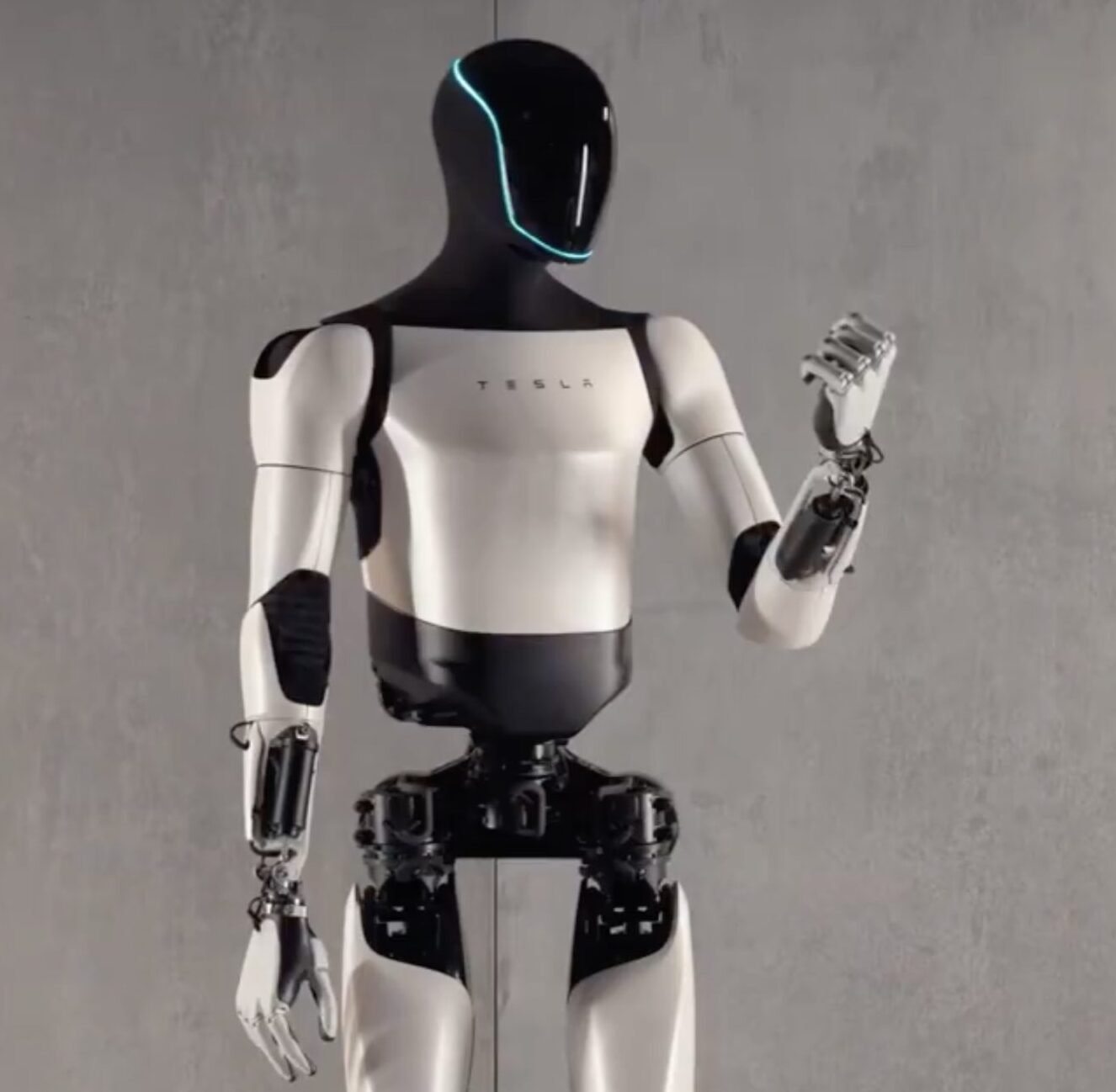Optimus Robot by Tesla
The Optimus robot, also known as the Tesla Bot, is an advanced humanoid robot being developed by Tesla under the leadership of Elon Musk. It was first introduced in August 2021 during Tesla’s AI Day event, where Musk presented the concept as part of Tesla’s broader vision for leveraging artificial intelligence (AI) and automation beyond electric vehicles.
Key Features of Optimus:
Humanoid Design:
Height: 5 feet 8 inches (approximately 173 cm).
Weight: Around 125 pounds (56 kg).
Shape and Appearance: Optimus is designed to look humanoid, with a sleek, minimalist design, a head-mounted display for visual data, and articulated limbs to mimic human movement. It is intended to move and operate in environments built for human workers.
Mobility:
Optimus can walk at a speed of about 5 mph (8 km/h), which is a moderate walking pace.
It is capable of lifting 150 pounds (68 kg) and carrying a payload of around 45 pounds (20 kg), making it useful for manual labor tasks like lifting, moving objects, and basic physical tasks.
AI and Sensors:
Optimus will use some of the same advanced AI and Autopilot technology that Tesla uses in its self-driving cars. This includes neural networks for decision-making, vision-based object detection, and pathfinding.
It will be equipped with cameras and sensors to navigate the environment, identify objects, and interact with humans and objects autonomously.
Tasks and Applications:
Initially, the Optimus robot is designed to handle repetitive, dangerous, or boring tasks that humans typically avoid. Examples include warehouse operations, factory work, or manual labor in construction and logistics.
Musk emphasized that Optimus would help alleviate labor shortages, particularly in industries that require physically demanding jobs.
In the future, Optimus could be further developed to handle more complex tasks such as assisting in homes, offices, or even dangerous environments like disaster zones.
Friendly Design:
Elon Musk mentioned that the robot is designed to be friendly, with a low power output that ensures humans can overpower it if necessary. The purpose behind this design is to alleviate concerns around safety in AI-driven robotics.
Autonomy and Functionality:
Optimus will be able to operate autonomously and be programmed to perform a variety of tasks. It will be voice-controlled and possibly connected to Tesla’s broader ecosystem of AI and smart technology.
Musk has suggested that, over time, Optimus could play an important role in the economy, potentially reducing the need for human labor in many repetitive and physically challenging jobs.
Human Assistance and Care:
In the long term, Tesla envisions that Optimus could assist with tasks at home, like helping elderly people, cooking, cleaning, or even providing personal companionship.
Vision and Long-Term Goals:
Elon Musk has positioned Optimus as a key part of Tesla’s future AI ambitions, claiming that it could become "more significant than Tesla’s car business" in the long run. The robot aims to not only revolutionize industries reliant on human labor but also open up new possibilities for automation and robotics.
Optimus aligns with Musk’s broader vision of creating "humanoid robots that could help improve the quality of life" by automating repetitive tasks and reducing human labor.
Challenges and Timeline:
Tesla is still in the development phase of the Optimus robot, and as of the most recent updates, Musk has indicated that a working prototype has been developed. However, mass production and widespread availability could take several years, with estimates suggesting 2025 or later for any large-scale deployment.
There are significant challenges in building reliable, general-purpose humanoid robots, such as achieving advanced mobility, dexterity, safety, and AI reliability in dynamic environments.
In summary, Tesla’s Optimus robot is an ambitious project aimed at pushing the boundaries of AI and robotics to create humanoid robots capable of handling everyday tasks, industrial jobs, and even assisting humans in personal environments. While still in development, it has the potential to become a transformative technology in the years to come.

